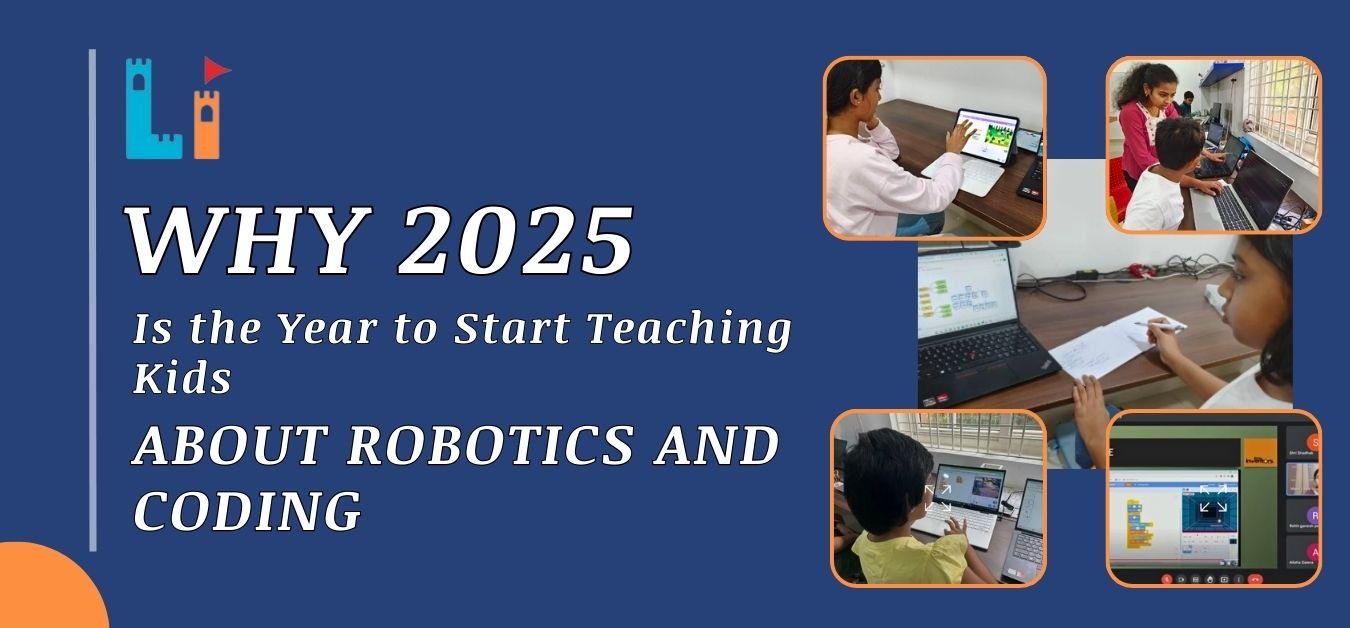Introduction
As we step into 2025, the world is witnessing a significant shift towards technological advancements. Robotics and coding have become essential skills for the future, and it’s crucial to introduce these concepts to kids at a young age. By doing so, we can empower the next generation to become innovators, creators, and leaders in the tech industry. In this blog, we’ll explore the importance of teaching kids about robotics and coding, the benefits, and how to get started.
The Importance of Teaching Kids About Robotics and Coding
1. Artificial Intelligence and Machine Learning: Robotics and coding are crucial for understanding AI and ML, which are transforming industries and revolutionizing the way we live and work.
2. Internet of Things (IoT): As IoT continues to grow, kids need to understand how to design, develop, and integrate IoT systems, which requires a strong foundation in robotics and coding.
3. Data Science and Analytics: Robotics and coding enable kids to collect, analyze, and interpret data, making them proficient in data science and analytics.
4. Cybersecurity: As technology advances, cybersecurity threats are becoming more sophisticated. Kids need to learn about robotics and coding to understand how to protect themselves and others from cyber threats.
Benefits of Teaching Kids About Robotics and Coding
1. Preparation for Emerging Technologies: Robotics and coding prepare kids for emerging technologies like quantum computing, augmented reality, and virtual reality.
2. Development of Soft Skills: Robotics and coding help kids develop essential soft skills like collaboration, communication, and adaptability.
3. Improved Digital Literacy: Robotics and coding improve kids’ digital literacy, enabling them to navigate the digital world safely and effectively.
4. Enhanced Career Opportunities: Knowledge of robotics and coding opens up a wide range of career opportunities in tech, healthcare, finance, and more.
How to Get Started
1. Online Resources: Utilize online resources like (link unavailable), Robotics Academy, and Scratch to introduce kids to robotics and coding.
2. Coding Apps: Engage kids with coding apps like CodeCombat, Robot Turtles, and Codeybot.
3. Robotics Kits: Invest in robotics kits like Lego Mindstorms, Dash, and Dot to provide hands-on experience.
4. Enroll in Courses: Enroll kids in courses or workshops that focus on robotics and coding.
Real-World Applications of Robotics and Coding
1. Healthcare Robotics: Robotics and coding are used in healthcare to develop robotic nurses, prosthetic limbs, and medical imaging analysis.
2. Environmental Monitoring: Robotics and coding are applied in environmental monitoring to track climate change, monitor wildlife, and develop sustainable solutions.
3. Space Exploration: Robotics and coding play a crucial role in space exploration, enabling robots to explore Mars, Jupiter, and beyond.
Challenges and Solutions
1. Lack of Resources: Many schools and families lack resources to introduce robotics and coding. Solution: Utilize online resources, crowdfunding, and partnerships with tech companies.
2. Teacher Training: Teachers may require training to effectively teach robotics and coding. Solution: Provide professional development opportunities, workshops, and online courses.
3. Equity and Access: Ensure equal access to robotics and coding education for underrepresented groups. Solution: Develop outreach programs, scholarships, and partnerships with organizations that support diversity and inclusion.
Conclusion
As we embark on 2025, it’s essential to recognize the significance of teaching kids about robotics and coding. By introducing these concepts at a young age, we can empower the next generation to become innovators, creators, and leaders in the tech industry.
Frequently Asked Questions (FAQs)
1. What age is suitable for introducing robotics and coding?
Kids can start learning robotics and coding as early as 5-6 years old, depending on their interest and aptitude.
2. Do I need to have prior knowledge of robotics and coding to teach kids?
No, you don’t need prior knowledge. Many online resources and courses provide guidance and support for teachers and parents.
3. How can I assess my child’s progress in robotics and coding?
Answer: Regularly review their projects, provide feedback, and encourage them to reflect on their own learning.
4. Are robotics and coding only for kids who want to pursue STEM careers?
: No, robotics and coding are essential skills for all kids, regardless of their future career aspirations.
5. How can I make robotics and coding more engaging and fun for kids?
Incorporate games, challenges, and real-world applications to make learning robotics and coding enjoyable and interactive.

